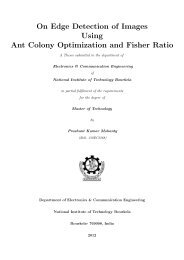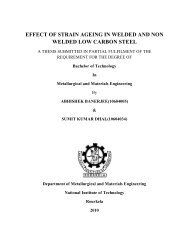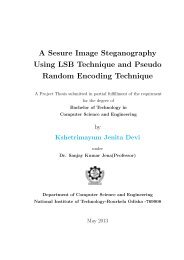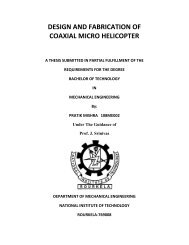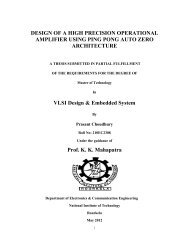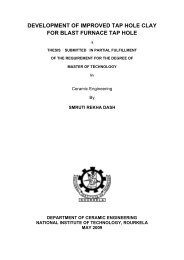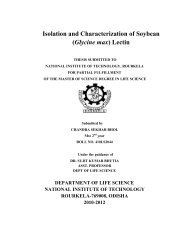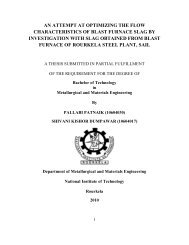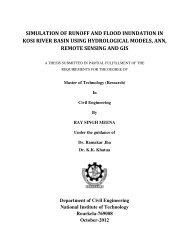Effect of hygrothermal treatment on the tensile properties - ethesis ...
Effect of hygrothermal treatment on the tensile properties - ethesis ...
Effect of hygrothermal treatment on the tensile properties - ethesis ...
You also want an ePaper? Increase the reach of your titles
YUMPU automatically turns print PDFs into web optimized ePapers that Google loves.
mechanical <strong>properties</strong>. The elastic modulus <str<strong>on</strong>g>of</str<strong>on</strong>g> bulk natural fibres such as wood is<br />
about 10 GPa. Cellulose fibre with<br />
moduli up to 40 GPa can be separated from wood, for instance, by chemical pulping<br />
processes.Such fibres can be fur<strong>the</strong>r subdivided by hydrolysis followed by mechanical<br />
disintegrati<strong>on</strong> into micr<str<strong>on</strong>g>of</str<strong>on</strong>g>ibrils with an elastic modulus <str<strong>on</strong>g>of</str<strong>on</strong>g> 70 GPa. Theoretical<br />
calculati<strong>on</strong>s <str<strong>on</strong>g>of</str<strong>on</strong>g> <strong>the</strong> elastic moduli <str<strong>on</strong>g>of</str<strong>on</strong>g> cellulose chains have given values <str<strong>on</strong>g>of</str<strong>on</strong>g> up to 250<br />
GPa, however, <strong>the</strong>re is no technology available to separate <strong>the</strong>se from micr<str<strong>on</strong>g>of</str<strong>on</strong>g>ibrils.<br />
Table 2.2: Mechanical <strong>properties</strong> <str<strong>on</strong>g>of</str<strong>on</strong>g> natural fibres as compared to c<strong>on</strong>venti<strong>on</strong>al<br />
reinforcing fibres<br />
As in <strong>the</strong> case with glass-fibres, <strong>the</strong> <strong>tensile</strong> strength <str<strong>on</strong>g>of</str<strong>on</strong>g> natural fibres also depends <strong>on</strong><br />
<strong>the</strong> test length <str<strong>on</strong>g>of</str<strong>on</strong>g> <strong>the</strong> specimens which is <str<strong>on</strong>g>of</str<strong>on</strong>g> main importance regarding reinforcing<br />
efficiency. The actual <strong>tensile</strong> strength <str<strong>on</strong>g>of</str<strong>on</strong>g> a single fibre is typically given for a test<br />
length <str<strong>on</strong>g>of</str<strong>on</strong>g> zero as in <strong>the</strong> case for glassfibres. The <strong>tensile</strong> strength <str<strong>on</strong>g>of</str<strong>on</strong>g> flax-fibres is<br />
significantly more dependent <strong>on</strong> <strong>the</strong> length <str<strong>on</strong>g>of</str<strong>on</strong>g> <strong>the</strong> fibre than for <strong>the</strong> case <str<strong>on</strong>g>of</str<strong>on</strong>g> glass-<br />
fibres. Compared to this, <strong>the</strong> <strong>tensile</strong> strength <str<strong>on</strong>g>of</str<strong>on</strong>g> pineapple-fibres is less dependent <strong>on</strong><br />
<strong>the</strong> length, while <strong>the</strong> scatter <str<strong>on</strong>g>of</str<strong>on</strong>g> <strong>the</strong> measured values for both is located mainly in <strong>the</strong><br />
range <str<strong>on</strong>g>of</str<strong>on</strong>g> <strong>the</strong> standard deviati<strong>on</strong>. This dependence, strength vs. test length, could be<br />
12





